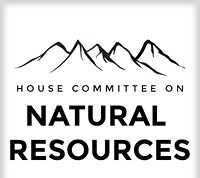Report Finds Increased Household Rent Debt in Sample of New York City Affordable Housing
New York, NY – RealEstateRama – The NYU Furman Center released a report today examining changes in the rental payments and arrears of households living in a sample of primarily income-restricted units in New York City during the COVID-19 pandemic. Using data compiled in partnership with the New York State Association for Affordable Housing, the report finds a 43% increase in the average unit-level rental debt within the sample between September 2019 and September 2020. The economic impact of COVID-19 likely exacerbated pre-existing challenges for this unique group of tenants, about half of whom had rental arrears when the pandemic began. Read Rent Payments in a Pandemic.
The research shows that rent payment rates remained at or above 90% throughout the sample period, but were notably lower in 2020 than in 2019, when tenants and landlords alike felt the strain of the pandemic. Rental arrears across the sample stayed relatively stable during the first few months of 2020, but increased in April and May, and then again in August and September. Increases in rental arrears followed the economic shutdown in March and the expiration of enhanced federal unemployment benefits at the end of July.
Some households weathered the crisis better than others. The decline in payment rates after March 2020 was much smaller for tenants with subsidies that adjust with income (such as Housing Choice Vouchers) than for the rest of the sample. Payment rate trajectories also differed with respect to tenants’ pre-existing payment histories. Households that were more than one month behind on rent at the end of 2019 had lower payment rates between April and September 2020 than those that were less than one month behind.
Notably, the number of tenant households in extreme rental arrears (owing more than $10,000) more than doubled during the survey period. Debts of that size are likely to be extremely challenging for households to pay off, or for landlords to absorb. The deepening and broadening of arrears indicate that without assistance, more households could be at risk of eviction or face other negative consequences.
While emergency rental assistance from the federal government could address this need by paying down rent debt, its effectiveness will depend on program design, tenant eligibility, and the ability to reach the most vulnerable renters. To help local governments better distribute rental assistance, the Furman Center surveyed over 220 state and local programs, performed in-depth case studies of 15, and wrote about advancing racial equity in emergency rental assistance programs.
Future research will explore how rent payments vary according to building and program characteristics, estimate vacancies, and continue to track the data through the winter of 2020.















